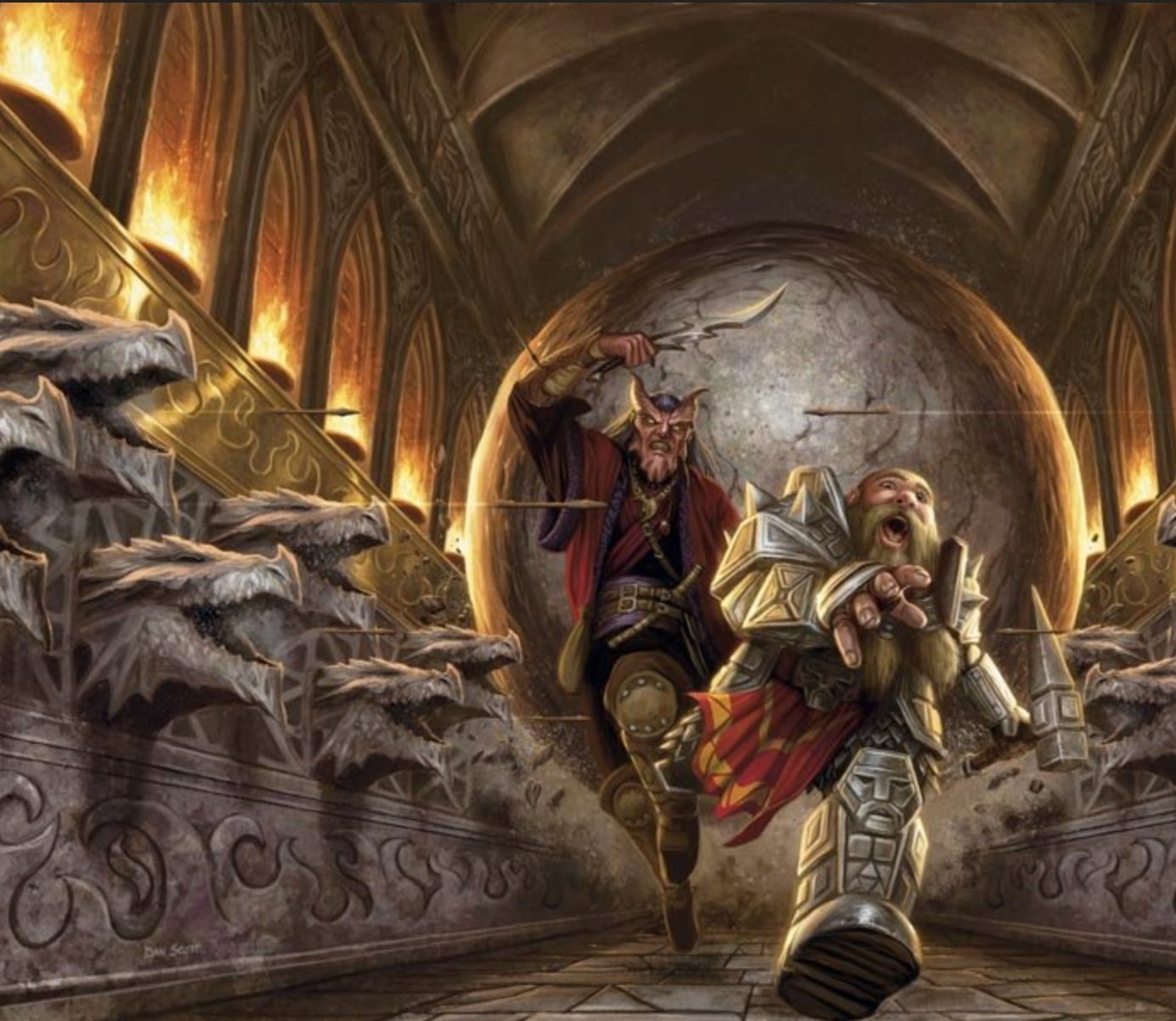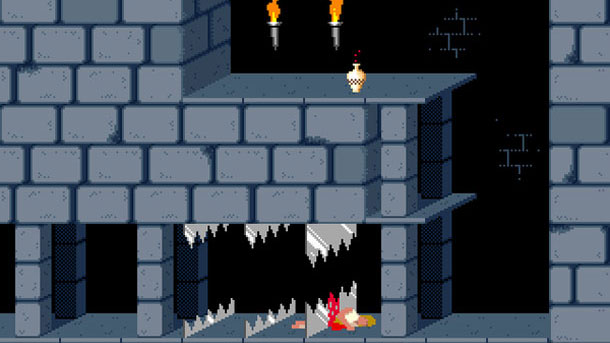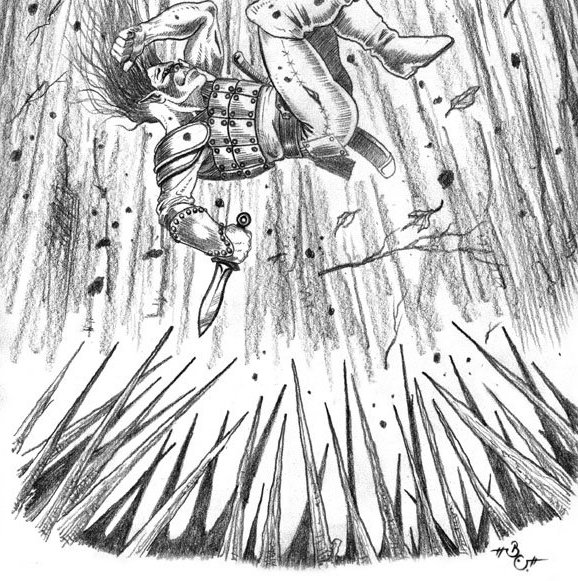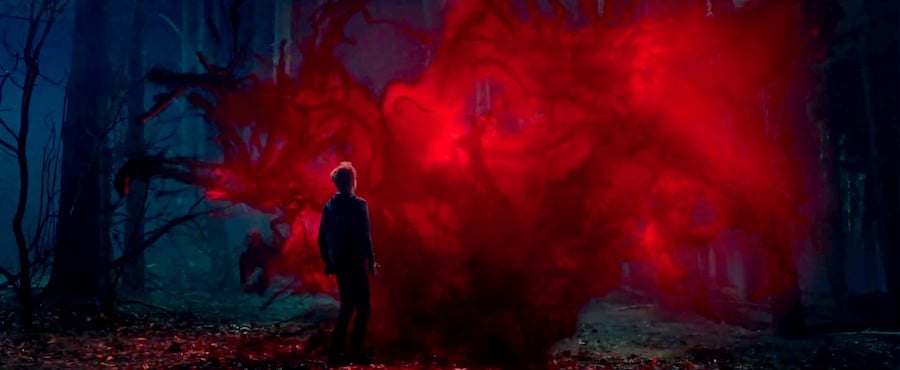D&D: Three Traps To Add Some Spice To Any Fight
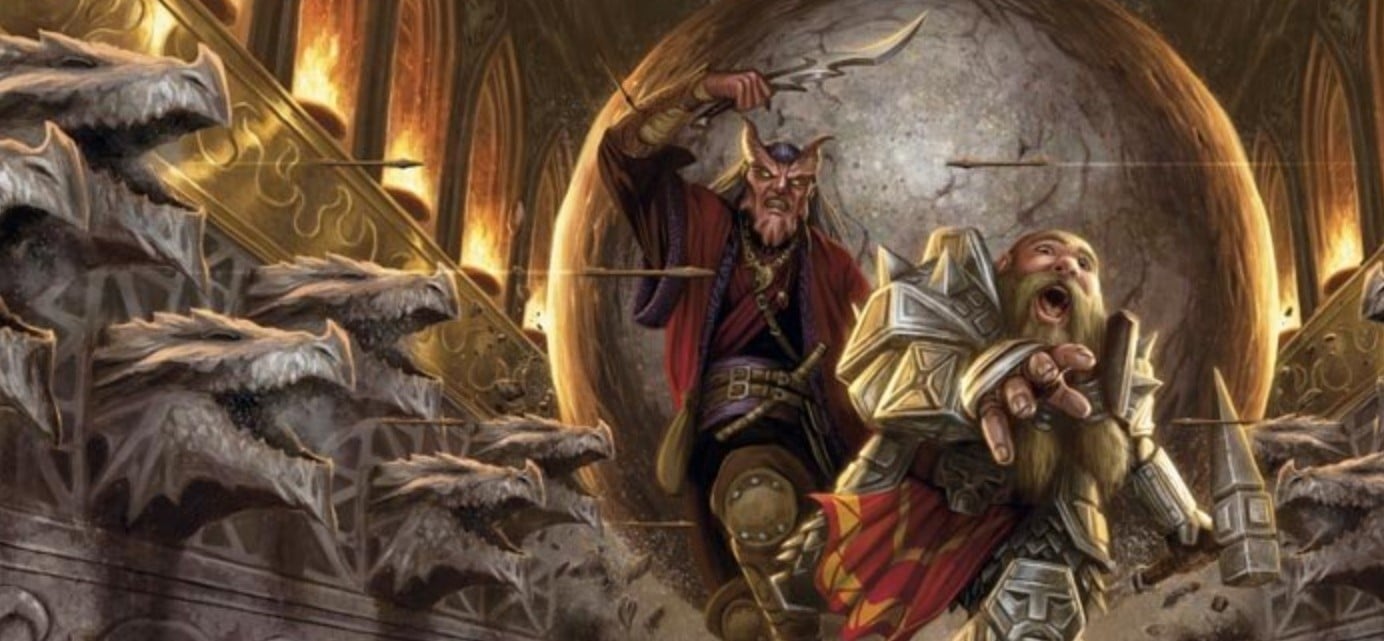
Do you have a hard time using traps in your game? Well we’re here to help with three traps that will add extra danger to any encounter.
Traps in D&D are a much maligned element of the game. At their worst, they can be arbitrary or pointless as players never discover them until they blunder into them. As a one off thing, traps can be ultimately little more than an excuse to run down resources–or to put it another way: they can do damage, sure, but a spiked pit trap isn’t exciting until there’s a demon cultist trying to push you into it.
Traps that just sit back and do damage aren’t anything. A good trap will encourage your party to react to it, to either try and get away from the situation caused by it (like our friends showing us their best Henry Jones Jr. impersonation up there) or better yet, to try and utilize them somehow as they encourage creative thinking in a fight (hey let’s push the goblin into the scything blades). You don’t want to overdo it, but traps can bring a lot to the table. Here are five you can use at your next encounter.
Scything Blades
A classic trap that is used to great effect in movies–but decidedly less deadly when confronting players who have more than enough hit points to take the hit, or who have ACs high enough that they won’t easily be hit by it in the first place.
But, have enemies ambush the players while they’re in a hall full of scything blades and suddenly the fight becomes a little more interesting. Players can push foes into the path of the blades for extra damage, or at least try and maneuver away from them.
Reverse Gravity “Pit”
Like this but upside down
Catch your characters a little off guard with a reverse pit. Have a rune of reversed gravity that can hurl victims into a nest of spikes on the ceiling. For an added bonus, the rune can reset itself after a while, shutting off so that the impaled characters fall (taking more damage).
This is a great trap to use in any area where you want to indicate that magic is either in heavy use, or disarray. It’s the perfect addition to a wizard’s lair–especially a wizard with spells like Thunderwave or others that force movement to position characters into the damage.
Gaseous Dorm
Done properly, a trap can be an encounter all its own. This trap works best when it’s used to protect a valuable treasure (especially if it’s one received near the end of a large adventure). As the characters remove the enormous jewel from the statue (or whatever), the doors seal themselves and toxic gas begins to fill the room.
Players are subjected to a random variety of gasses on each round, as well as taking damage from the trap if you desire. On initiative count 20, roll 1d6 or come up with your own list of effects to subject the party to each round:
- Confusion, per the spell, sets in unless targets make a DC 15 Wisdom save. Characters who make their saves, still have disadvantage on Intelligence and Wisdom checks until the next Initiative count 20)
- Caustic gas fills the room, and creatures in the room must make a DC 15 constitution saving throw or take 4d8 acid damage.
- Terror gas fills the area, and creatures caught in it must make a DC 15 Wisdom saving throw or become frightened until the end of their next turn.
- Heavy mist fills the room, obscuring all vision.
- Enthralling gas fills the area, and characters must make a DC 15 Charisma saving throw or become charmed until they next take damage
- Enervating gas fills the area, and characters must make a DC 15 Constitution saving throw or have their hit point maximum reduced by 5 until they finish a long or short rest. All characters in the area suffer disadvantage on Strength and Dexterity checks until the next Initiative count 20.
In order to escape the room, players will need to find a way to open the door–though the locking mechanism is hidden within the door’s construction and requires a DC 20 perception check to locate, as well as a DC 20 thieves’ tools check to open the locking mechanism. A DC 20 athletics check is needed to wedge open the doors once they are unlocked.
The source of the gas can also be blocked, if characters have access to wherever the gas is pouring in from.

